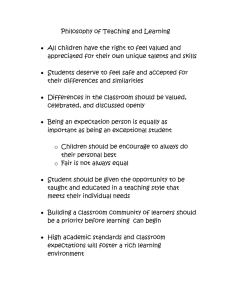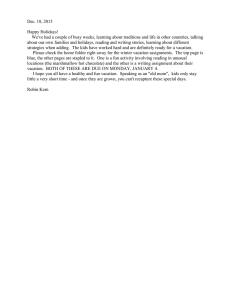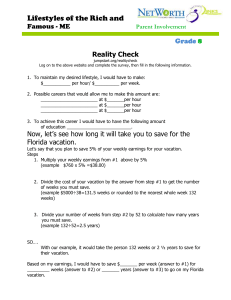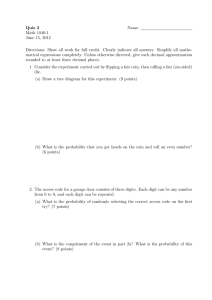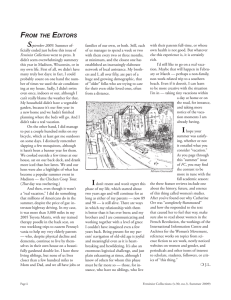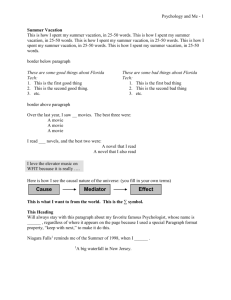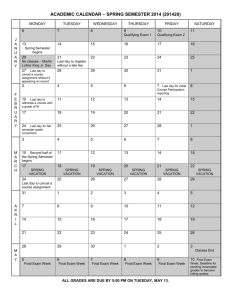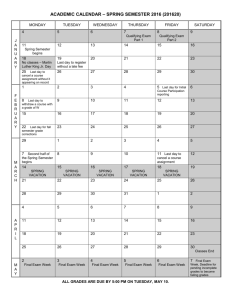TAKE A DEEP BREATH AND START AGAIN
advertisement
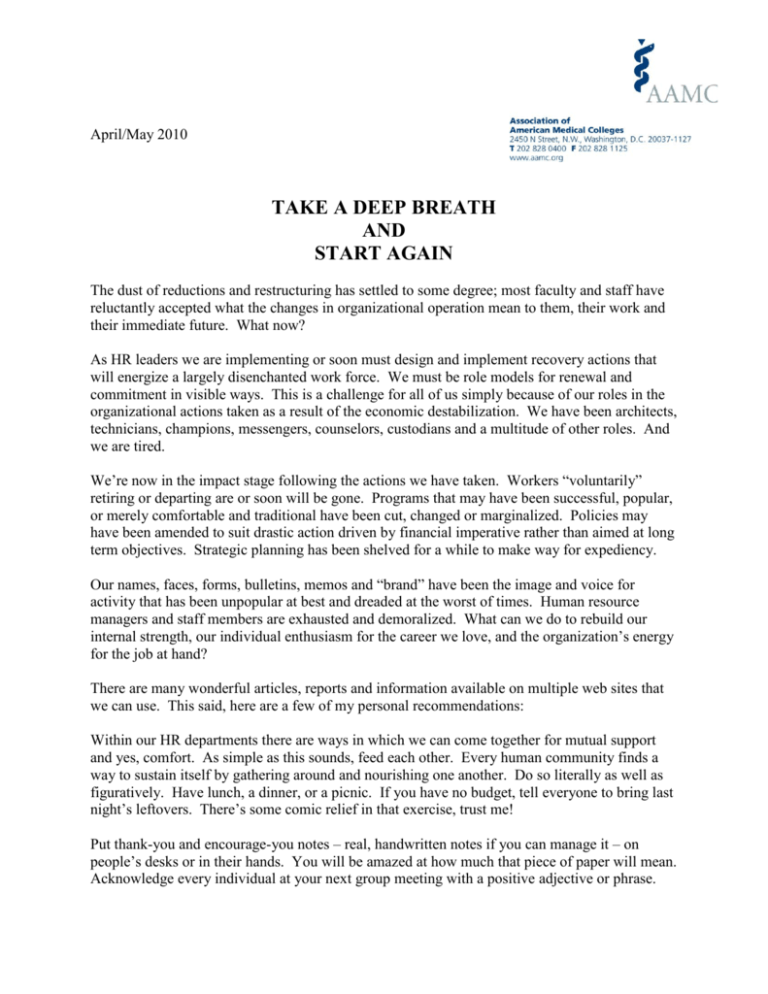
April/May 2010 TAKE A DEEP BREATH AND START AGAIN The dust of reductions and restructuring has settled to some degree; most faculty and staff have reluctantly accepted what the changes in organizational operation mean to them, their work and their immediate future. What now? As HR leaders we are implementing or soon must design and implement recovery actions that will energize a largely disenchanted work force. We must be role models for renewal and commitment in visible ways. This is a challenge for all of us simply because of our roles in the organizational actions taken as a result of the economic destabilization. We have been architects, technicians, champions, messengers, counselors, custodians and a multitude of other roles. And we are tired. We’re now in the impact stage following the actions we have taken. Workers “voluntarily” retiring or departing are or soon will be gone. Programs that may have been successful, popular, or merely comfortable and traditional have been cut, changed or marginalized. Policies may have been amended to suit drastic action driven by financial imperative rather than aimed at long term objectives. Strategic planning has been shelved for a while to make way for expediency. Our names, faces, forms, bulletins, memos and “brand” have been the image and voice for activity that has been unpopular at best and dreaded at the worst of times. Human resource managers and staff members are exhausted and demoralized. What can we do to rebuild our internal strength, our individual enthusiasm for the career we love, and the organization’s energy for the job at hand? There are many wonderful articles, reports and information available on multiple web sites that we can use. This said, here are a few of my personal recommendations: Within our HR departments there are ways in which we can come together for mutual support and yes, comfort. As simple as this sounds, feed each other. Every human community finds a way to sustain itself by gathering around and nourishing one another. Do so literally as well as figuratively. Have lunch, a dinner, or a picnic. If you have no budget, tell everyone to bring last night’s leftovers. There’s some comic relief in that exercise, trust me! Put thank-you and encourage-you notes – real, handwritten notes if you can manage it – on people’s desks or in their hands. You will be amazed at how much that piece of paper will mean. Acknowledge every individual at your next group meeting with a positive adjective or phrase. 2|Page Stand in the hall and find something to laugh about. Share your lunch. Share your vacation pictures. TAKE some vacation and encourage your staff to do the same. Be available to talk, be frank, and be present. As organizational citizens and more importantly, as real stakeholders in the health and well being of the work environment, we cannot afford to be invisible or silent. This is the time for us to project positive attitudes, think constructively again, and demonstrate enthusiastic support for the processes of regrouping and rebuilding that lie ahead. Rethink rewards, recognition, bonus and incentive programs. Cash works best, and smaller amounts may be much more acceptable now than they were prior to September 2008. Take another look at the compensation of your most highly valued faculty and staff. Be sure they know who they are. And be ready with financial data about how much more costly it would be to replace them rather than to give them a raise. Change the wording or tone or style of your performance evaluation tools. Look for constructive and positive ways to provide feedback. As unhappy as this next proposal may appear, use your performance evaluation, coaching and disciplinary systems to help weed out the marginal performers. I urge you and your peers to spend some time dealing with those people in the workplace who are no longer productive or effective. Odds are, most of the rest of the community knows just who they are, and many are feeling resentful that some valued colleagues are gone while the “bad actors” remain. You need to be ready to strategically add staff that are newly committed and more engaged in “starting over.” While you design your recruitment enticements, remember to share some or all of them with current staff – they need to hear again all the good and true things about the place; after all, that’s what brought them to the work, too. Be vigilant and as insistent as possible in requiring your leaders to “tell the truth” about impending actions or events, and especially about the financial health of the unit, department, division or the institution as a whole. Your staff and faculty as well as your HR department have been through a good deal of stress – respect and reward them by communicating with honesty and candor. Finally, ask for suggestions. People want to do good work. Let’s get them back to the mission at hand. Comments or questions? Mary Dupont Barrett mdbarrett@vermontel.net mdbarrett@aamc.org 802-885-1319
